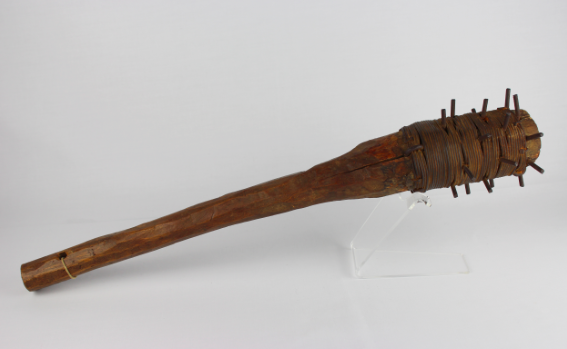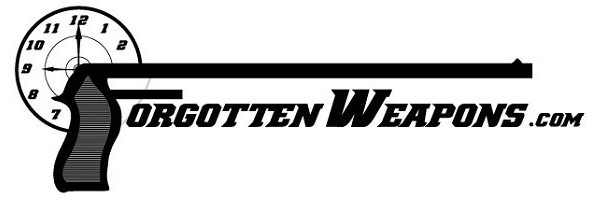This is a “Klienen Waffenwerkzeugatz” – a small armorer’s tool kit used by a German Waffenmeister. It is a really neat little set of handy and essential tools for working on small arms, which folds up and fits neatly into a standard German WWII ammunition can. The use of standard ammo cans for several other types of storage was common for the German military, as there were a bunch of vehicular mounts designed to fit ammo cans and it was a simple and universal type of storage. Anyway, this kit is in fantastic shape, and includes pliers, files, handles, calipers, wrenches, scrapers, and a portable vise for holding small parts. Everything you need to fix that shrapnel damage to your MG34!
Related Articles

Video
WWI Trench Hand Weapons
Karl and I recently did some work with a wide selection of hand weapons from WWI (some original, some reproductions) for a video in collaboration with the excellent YouTube channel The Great War. Have a […]

Semiauto Rifles
Gewehr 43 (Video)
German ordnance began looking for a military selfloading rifle to augment the K98k as early as the 1930s, although the pressures of war initially made that development a second priority. By 1941, though, two competing […]

Bolt Action Rifles
2-Gun Match: WWII Snipers (Video)
This month for the 2-Gun Action Challenge Match, Karl and I square off with WWII snipers’ rifles. I have a No4 MkI (T) Enfield sniper with a 3.5x No.32 scope, and Karl has a Mauser […]

Maybe you could make that a ‘kleiner Waffenwerkzeugsatz’.
Zo heeft het wel iets “ontwapenends” 😉
Has it disarmed anything? Verstaan ek dit reg?
Compact kits are great for field use. You don’t know if returning to base for proper tools is an option once you’ve driven into partisan territory. The base might have been blown to bits for all we know… I could be wrong.
As Bas has pointed out, it’s “kleiner Waffenwerkzeugsatz.” Werkzeug means tool (literally, “work-tool” – Zeug can mean tool or devicee and is distantly related to the English word “toy.”). Satz means set.
Zeug long long long time ago was Deutsch term for gun (artillery piece) and its accessories, but now this meaning fall into oblivion. Nonetheless Swiss army still use term Zeughaus for describing building for storing weapons, when other Deutsch-using countries use Arsenal.
In modern Deutsch it means just thing and often when linked with other word it might be understand as machine or device for example
Fahrzeug (fahren) vehicle
Spielzeug (spielen = play) toy
Flugzeug (fliegen = fly) aeroplane
Let’s be honest the Germans are not from planet stupid. That kit can take you a bit further in the game.
The kit is made to serve in the field, not sit around to look pretty. Since the German ammunition cans are capable of holding other types of items, why not make your kits and most of your small utilities fit in them? No need to reinvent baggage space!
Contrast the Jerry Can (fuel and water containment unit) against the typical fuel cans used by the US Army before 1941. The former was simple in that it did NOT require specialized tools for unsealing and pouring into a car’s fuel reservoir (hint: need a wrench set, huge hammer, and funnel?). The Jerry Can also was resistant to fuel-fume-induced bursting due to basic application of stress-redirecting geometry. Conventional fuel containers elsewhere required wrenches and/or hammers to get them open (or to close them) and they could not pour into a vehicle fuel tank without a funnel being present.
Did I mess up?
“Jerry Can”
I assume you meant Wehrmacht-Einheitskanister under that term.
Also notice triple holding allowing easy carry of 4 examples (2 per hand) of empty ones.
What an amazing tool kit! Back in the mid 60’s I was trained as a small arms repairman 45B20. We never had anything that neat and compact. Leave it to the German’s. Also, I am reading “The minisry of ungentlemanly warefare” and it is great. All of the followers of Forgotten Weapons should read this book. Keep up the good work.
Jim Kelly
The light colored tool silhouettes are to make it easy to see if you left any tools behind. A light space means something is missing and you need to go looking for it.